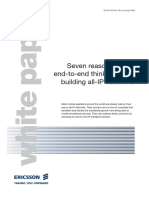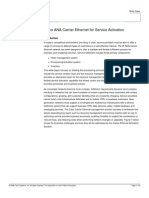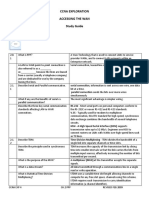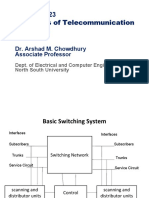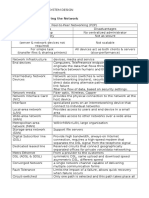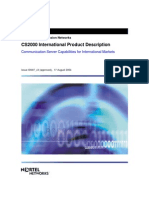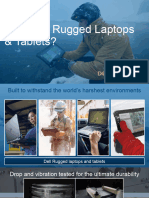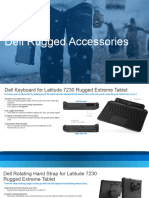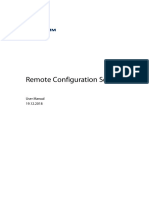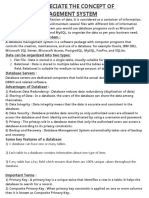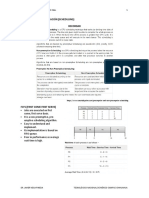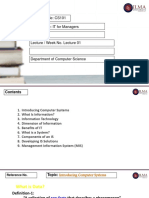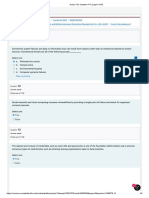0% found this document useful (0 votes)
60 views7 pagesSolution Quick Start
This document provides a quick overview of an enterprise network solution that includes:
- Vertical market solutions for government, transportation, energy, and more.
- Core network systems that provide services like user authentication, mobility management, and sessions.
- Broadband access terminals for handheld and vehicle-mounted use.
- Basic trunking services including group calls, private calls, call forwarding and more.
- Additional multimedia services for video, images, SMS and location-based features.
- Network-wide quality of service management across systems.
Uploaded by
prakistaoCopyright
© © All Rights Reserved
We take content rights seriously. If you suspect this is your content, claim it here.
Available Formats
Download as PDF, TXT or read online on Scribd
0% found this document useful (0 votes)
60 views7 pagesSolution Quick Start
This document provides a quick overview of an enterprise network solution that includes:
- Vertical market solutions for government, transportation, energy, and more.
- Core network systems that provide services like user authentication, mobility management, and sessions.
- Broadband access terminals for handheld and vehicle-mounted use.
- Basic trunking services including group calls, private calls, call forwarding and more.
- Additional multimedia services for video, images, SMS and location-based features.
- Network-wide quality of service management across systems.
Uploaded by
prakistaoCopyright
© © All Rights Reserved
We take content rights seriously. If you suspect this is your content, claim it here.
Available Formats
Download as PDF, TXT or read online on Scribd
/ 7













